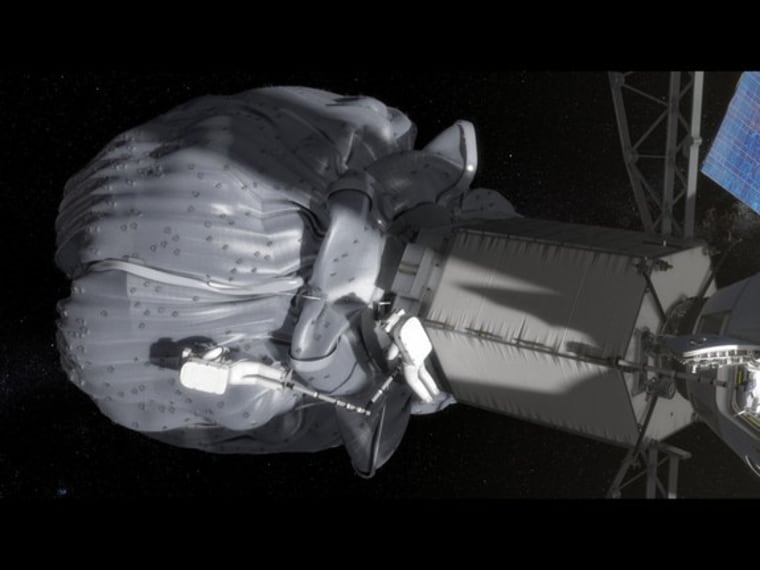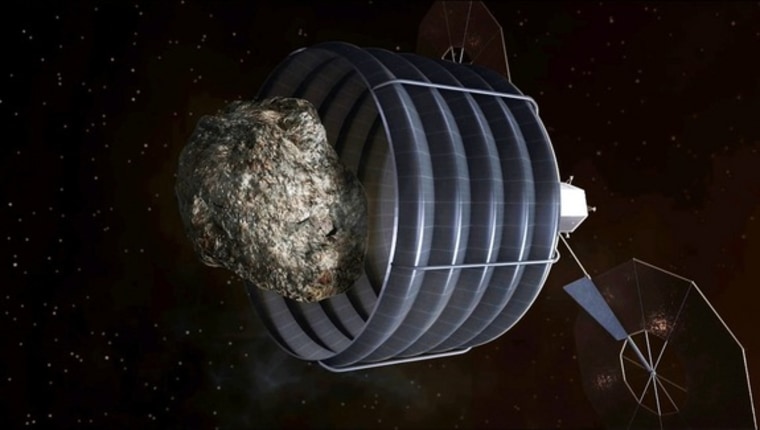NASA has narrowed the list of candidates down to three space rocks for an ambitious mission to capture an asteroid and tow it to the moon, where it can be explored by astronauts.
The space agency's plan aims to bring a 23-foot-wide (7 meters) space rock into lunar orbit using a robotic space lasso. Once the asteroid is in a stable orbit around the moon, astronauts can visit as soon as 2021 using NASA's Orion space capsule and the giant Space Launch System mega-rocket.
NASA scientists have identified three of the best candidates from a list of 14 asteroids that could be prime contenders for this kind of mission, Paul Chodas, a senior scientist in NASA's Near-Earth Object Program Office told reporters in a teleconference Wednesday. [NASA's Asteroid Capture Mission in Pictures: How It Works]
"It's mostly orbital constraints that those 14 satisfy," Chodas said. "We did not have the opportunity to characterize the size. We have two to three which we'll characterize in the next year and if all goes well, those will be valid candidates that could be certified targets and we'll pass by another in the year 2016. So we have three from the list of 14."

Chodas also thinks that the future of viable asteroid discovery is bright. NASA scientists could find about five more asteroid candidates each year as it prepares for the mission, he said during the teleconference held at the Space 2013 conference held by the American Institute of Aeronautics and Astronautics in San Diego, Calif.
NASA's asteroid-capture mission aims to send astronauts to explore an asteroid by 2025, a space exploration goal set by President Barack Obama in 2010. NASA's 2014 budget plan sets aside $100 million to jump-start the work on the asteroid mission, though the entire project could cost up to $2.6 billion, according to a Keck Institute study.
Scientists are searching for a specific kind of space rock to tow into orbit around the moon. NASA officials want an asteroid that is between 20 and 30 feet (7 and 10 meters) in size, which is fairly small for an asteroid. The target size of the near-Earth object is somewhat constrained by the size of the bag and the ability of the robotic probe to wrangle the asteroid back to Earth, Chodas said.
Officials are also hoping to capture an asteroid that will be made out of useful material.
"It would be preferred to have a so-called 'C-type' asteroid, which is one that has hydrated minerals," Chodas said. "These are the kinds of asteroids from which you can extract water and oxygen in theory. So this would be a very interesting object to have in distant retrograde orbit around the moon because we could get an idea of what would be required to use asteroids as way-stations to extract consumables should we need that on the way to Mars, for example."
Enhancing the discovery methods for possible asteroid capture mission candidates also could increase the discovery rate for Earth-threatening asteroids, Chodas said: "We can't just look for one kind of asteroid and not find the other. With these enhancements, we're going to find more of both kinds."
NASA put out a call for proposals from outside groups about the best ways to go about tackling the asteroid mission and it paid off. The space agency received more than 400 proposals for the asteroid capture mission that officials narrowed down to 96 they plan on discussing in a public workshop taking place from Sept. 30 to Oct. 2.
Follow Miriam Kramer @mirikramer and Google+. Follow us @Spacedotcom, Facebook and Google+. Original article on Space.com.
- How to Catch an Asteroid: NASA Mission Explained (Infographic)
- Animation Of Proposed Asteroid Redirect Mission | Video
- Potentially Dangerous Asteroids (Images)
